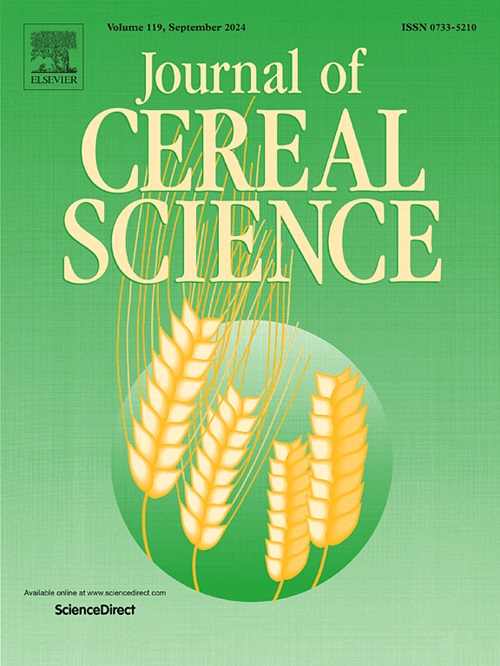Impact of superheated steam processing on amino acids, structure, and functionality of Proso millet proteins
IF 3.7
2区 农林科学
Q2 FOOD SCIENCE & TECHNOLOGY
引用次数: 0
Abstract
Proso millet proteins (PMP) can be used as an alternative to gluten-free protein sources to meet market demand. Due to its poor digestibility and functional properties, PMP commercial applications have become challenging. Hence, superheated steam (SHS) treatment was applied to PMP (at 130–140 °C for 3, 6, and 9 min), which led to a slight variation in essential amino acids over shorter treatment durations. Increased SHS treatment durations at 130 °C improved in vitro protein digestibility (90.52 %) by unfolding the native PMP structures supported by disulfide bonds and secondary structures (where α-helix and β-sheet structures reduced). Apart from water absorption capacity, 130°C-9 min treated PMP showed the highest improvement in functional properties. The 140 °C treated PMP for 6 and 9 min resulted in thinner SDS-PAGE band intensities, larger particle sizes, and compact structural orientation, potentially leading to decreased functional properties (due to the degradation of heat-sensitive amino acids, hydrogen bonds, covalent interactions and excessive oxidation). From the multivariate analysis, it is recommended that SHS treatment at 130 °C for 6–9 min can modify PMP and may be helpful in developing meat alternatives, emulsions, hybrid milk, and other beverages.
过热蒸汽加工对谷子蛋白质氨基酸、结构和功能的影响
Proso小米蛋白(PMP)可作为无谷蛋白来源的替代品,满足市场需求。由于其较差的可消化性和功能特性,PMP的商业应用变得具有挑战性。因此,将过热蒸汽(SHS)处理应用于PMP(在130-140°C下进行3,6和9分钟),这导致必需氨基酸在较短的处理时间内发生轻微变化。在130°C下增加SHS处理时间,通过打开由二硫键和二级结构(α-螺旋和β-片结构减少)支持的天然PMP结构,提高了体外蛋白质消化率(90.52%)。除吸水能力外,130°C-9 min处理的PMP在功能性能上的改善最大。140°C处理6和9分钟的PMP导致SDS-PAGE带强度更薄,颗粒尺寸更大,结构取向更紧凑,可能导致功能性能下降(由于热敏氨基酸、氢键、共价相互作用和过度氧化的降解)。从多变量分析来看,建议在130°C下进行6-9分钟的SHS处理可以改变PMP,并可能有助于开发肉类替代品、乳剂、混合牛奶和其他饮料。
本文章由计算机程序翻译,如有差异,请以英文原文为准。
求助全文
约1分钟内获得全文
求助全文
来源期刊

Journal of Cereal Science
工程技术-食品科技
CiteScore
7.80
自引率
2.60%
发文量
163
审稿时长
38 days
期刊介绍:
The Journal of Cereal Science was established in 1983 to provide an International forum for the publication of original research papers of high standing covering all aspects of cereal science related to the functional and nutritional quality of cereal grains (true cereals - members of the Poaceae family and starchy pseudocereals - members of the Amaranthaceae, Chenopodiaceae and Polygonaceae families) and their products, in relation to the cereals used. The journal also publishes concise and critical review articles appraising the status and future directions of specific areas of cereal science and short communications that present news of important advances in research. The journal aims at topicality and at providing comprehensive coverage of progress in the field.
 求助内容:
求助内容: 应助结果提醒方式:
应助结果提醒方式:


